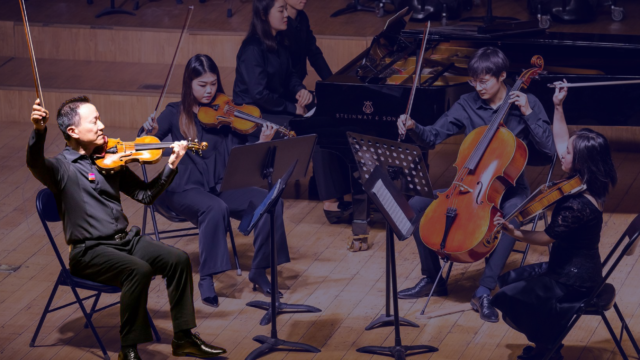Audience Diversification – Overcoming Challenges

Is it extra work to engage new audiences creatively and authentically? Joe Loehnis, CEO of the Wisconsin Chamber Orchestra, rejects the framing of the question. “This is the work,” he insists. “If you’re not doing this, what are you doing? If you’re a board with fiduciary responsibility, a staff with a business to run, or a musician with a charge to entertain and inspire, and you’re not rooting everything you do in the growth of the audience, and doing things differently for a different outcome, what are you actually doing? We can’t think of this as extra work. It’s a complete reimagining.” He uses a flywheel as an analogy. “The first turn is hard, but then it gets moving, and soon it’s the new paradigm.”
Below are the most common challenges your orchestra might encounter when engaging in this work and ways to overcome them.
Limited Staff Capacity
Limited staff capacity is the challenge most often cited by colleagues. Listening — rather than assuming what communities seek — and building relationships takes time and patience. Ideally, a larger budget orchestra might hire a dedicated person, with expertise in cultivating relationships and celebrating diversity, who can build trust in the community. A smaller budget orchestra might work with an experienced board member to fulfill a similar role.
Budgeting
Successful budgets are built to enable innovation and change, striking a balance between urgent, short-term needs and a commitment to longer-term growth. Allocating a budget for audience development should be seen as an investment, as events targeting new communities may be perceived to lose money initially. However, looking at the season as a whole, with some events selling well to balance others, enables an orchestra to show long-term commitment to new partnerships and audience segments.
Financial Resources
Developing and operationalizing strategies for realigning the orchestra experience with communities’ needs inevitably brings new expenses. Audience development and diversification need a dedicated budget line. Many foundations and donors support audience diversification; if an orchestra’s efforts show authentic commitment, money will follow mission. Donna Walker-Kuhne says, “Contributed income needs to pick up the slack. Donations from foundations and individuals are down, but there’s an untapped pool of civic-minded donors.”
Conventions and Existing Systems
Orchestras have only just begun to experiment with fresh ways of presenting live music, with innovations in how buildings operate, how audiences interact with performance, how music is contextualized, how lobbies are activated, and how food and drink are served. Realigning the traditional concert experience with the needs of diverse new audiences means challenging established conventions and systems to realize the potential for a creatively vibrant and sustainable future.
Reinventing the audience experience and making new audience members feel welcome may feel like extra work, but it is actually the new normal, a shift in the culture of our orchestral workplace. It begins with increasing diversity of representation on the stage and continues with welcoming messages and relaxed expectations for things like applause and phone use. Ongoing training for front-of-house staff and volunteers is essential.
Cultural Barriers
Cultural barriers and negative previous experiences may make people reluctant to try the orchestra experience. Uncovering these barriers through research and relationship building — alongside all the ways in which the orchestra can create value within specific communities — should influence the evolution of the orchestra’s offer and the way it is communicated. It is a matter of orchestra staff understanding and responding to the values and preferences of new audiences as much as it is helping diverse audiences to feel comfortable with the protocol of the event.
Earning Trust
Past practices like one-shot events have left a bad impression in some communities. Showing up and supporting community organizations helps build trust and partnership over time, eventually fostering loyalty. Sincerity, authenticity, transparency — and apology and thanks when people point out how they have felt dismissed — all go a long way. “Remember, we need them,” says Donna Walker-Kuhne. “They already have many cultural experiences, and we are encouraging them to add one more.”
Getting In Sync
Board and executive leadership need to drive diversification efforts and give them time to succeed. This is why board and leadership participation in EDI training is so important. When principles of equity, diversity, and inclusion are ingrained in every aspect of an orchestra’s work, departments work toward shared goals.
Related
-
Learn | Audience Engagement
Shaping a Positive Musical Learning Environment for Youth
Become a member
Thank you for your interest in the League of American Orchestras! We are dedicated to advancing the orchestral experience for all.
Join Now